Robert Frank - The Present (1996)
Monday, June 30, 2008
1996, 24 min.
Simple objects, photographs, and events prompt Frank to self-conscious rumination. From his homes in New York and Nova Scotia and on visits to friends, the artist contemplates his relationships, the anniversary of his daughter's death, his son's mental illness, and his work.


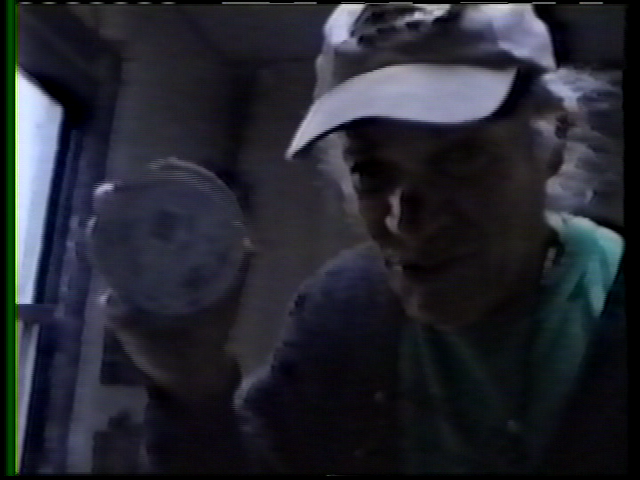 Available at KaraGarga.
Available at KaraGarga.
at 10:30 PM
Nancy Holt & Robert Smithson - Swamp (1971)
Thursday, June 26, 2008
Nancy Holt and Robert Smithson collaborated on this seminal film, which viscerally confronts issues of perception and process. The action of the film is direct: Holt walks through the tall grasses of a swamp while filming with her Bolex camera, guided only by what she can see through the camera lens and by Smithson's verbal instructions. The viewer experiences the walk from Holt's point of view, seeing through her camera lens and hearing Smithson's spoken directions. Vision is obstructed and perception distorted as they stumble through the swamp grasses. Holt has stated that Swamp "...deals with limitations of perception through the camera eye as Bob and I struggled through a muddy New Jersey swamp. Verbal direction cannot easily be followed. As the reeds crash against the camera lens blocking vision and forming continuously shifting patterns, confusion ensues." - eai.org



Available at KaraGarga.
at 8:51 PM
Nancy Holt & Robert Smithson - Mono Lake (1968 - 2004)
Monday, June 23, 2008
1968-2004, 19:54 min, color, sound
Featuring Super 8 film footage and Instamatic slide images of artists Robert Smithson, Michael Heizer and Nancy Holt as they visited California's Mono Lake in July of 1968, this piece was edited by Holt in 2004. Mono Lake candidly captures the young artists as they explore the haunting landscape of one of the oldest and most distinctive lakes in North America. Heizer and Smithson are heard reading facts about the unique ecology, geology and natural phenomena of this alkaline lake. The voiceovers are set against filmed images and snapshots of the artists within the uncanny beauty of the lake's environment. Smithson is shown collecting cinders from the volcanic hills on the lake's shores, which were used to make his 1968 sculpture "Mono Lake Nonsite."
Mono Lake is a document of a unique natural environment, a "home movie" of the artists' 1968 road trip, and an intimate view of three seminal figures in the earth art movement as they interact with the Western landscapes that are so central to their work.
The following text, which appears on-screen, provides further background on the recording and editing of the piece: "Mono Lake was shot in 1968 on Super 8 film and Instamatic slides, which were later transferred to video. Smithson selected the readings and the music by Michel Legrand for the early, unedited soundtrack, which was recorded close to the time of the filming. The two country and western songs were sung by Waylon Jennings at a performance in Las Vegas attended by Heizer, Holt and Smithson in the week before the trip to Mono Lake, California... Holt and Smithson originally planned to edit Mono Lake together. The project was subsequently put aside until 2004, when it was edited by Holt for the Robert Smithson Retrospective at the Museum of Contemporary Art in Los Angeles."
Robert Smithson, with Michael Heizer and Nancy Holt, caught on film July 27, 1968. Camera: Michael Heizer, Nancy Holt, Robert Smithson. Soundtrack Readings: Michael Heizer, Robert Smithson. Producer/Editor: Nancy Holt. Music by Michel Legrand from the soundtrack of the film "Bay of Angels" by Jacques Demy, Cine-Tamaris, 1963. Songs by Waylon Jennings: "Walk on Out of My Mind," (RCA Victor, 1967); "Stop the World (and Let Me Off)," (RCA Victor, 1965). Readings from the booklet "Rock Hounding Out of Bishop" written by Cora B. Houghtaling, Chalfont Press, Bishop, CA, 1967. A Holt/Smithson Video. (quote from eai.org)




Available at KaraGarga.
at 1:30 PM
Piero Golia - Killer Shrimps (2004)
Wednesday, June 18, 2008
Original format: 16:9 DV video
Duration: 75 minutes
Synopsis
Pool side at a ranch style house in the canyons of Los Angeles two film-makers and their crew are filming a documentary about a young director. An interesting exploration into the ambitions and expectations of a rising star. Going back and forth in between different realities and possible futures, the arrival of a peculiar food delivery will open their experience to an alternative world populated with hallucinations. This sets the stage for the mother of all gorefests, as the two directors and their crew end up as characters in the eternal battle against evil creatures.


Director's comment
In Killer Shrimps the boundaries between reality and fiction are pushed so far they almost disappear, the real becomes unreal and the fictive becomes plausibly authentic. Concerning the proposition of a new technique of filmmaking: instead of the traditional reproduction of reality with the use of convincing sets or a lifelike shooting style, we decided to execute this movie by forcing reality to become fiction, by pushing the actual to become similar to what ought to be considered artificial. All the usual categories of realism, time and space, get lost in the name of a bigger general category, ìthe unreal. The actual film will be a sort of behind-the-scenes view of a documentary that was never executed. Going back and forth in time, the usual linearity of this dimension becomes elliptical to the point that it almost disappears or becomes unrecognizable. This creates different certainties and a variety of possible futures, until expectations and fears appear as something physical, opening up the possibility of experiencing an alternate world populated with zombies.
Available at KaraGarga.
at 12:07 AM
Isidore Isou (Jean Isidore Goldstein) - Treatise on Slobber and Eternity (1951)
Tuesday, June 17, 2008
This is the opening manifesto of the postwar european avant-garde cinema. Created by the charismatic founder of Lettrism, mentor of Lemaitre and Debord, the Hungarian jew Jean Isidore Goldstein who moved to Paris in 1945 and went by the nickname given to him as a child by his mother: Izu (Isou). Quite obviously inspirational to generations of filmmakers, not the least of which were two little directors you might have heard of named Stan Brakhage and Jean-Luc Godard.








Available at KaraGarga.
at 6:50 PM
Jack Chambers - The Hart of London (1970)
Sunday, June 15, 2008
"Jack Chambers's 80-minute The Hart of London (1970) is a sprawling, ambitious film that combines newsreel footage of disasters, urban and nature imagery, and footage evoking the cycles of life and death. It is one of those rare films that succeeds precisely because of its sprawl; raw and open-ended almost to the point of anticipating the postmodern rejection of "master narratives," it cannot be reduced to a simple summary, and changes on you from one viewing to the next." - Fred Camper

 Available at KaraGarga.
Available at KaraGarga.
at 1:27 PM
Martha Rosler - Secrets from the Street: No Disclosure (1980)
Reading the billboards, the trash, the cars, the people, and the graffitti of the street as cultural signs, Rosler extracts the network of social power and domination that determines whose culture gets represented where, asking, "Whose culture gets in the magazines and whose culture is required to exist in the street?" A collage of super-8 footage shot while cruising the streets of a predominantly Latino neighborhood with a voiceover of Rosler's commentary, the tape successfully combines social analysis with everyday observation, drawing attention to the structure of society's fabric and reevaluating what the dominant culture calls "trash."


 Available at KaraGarga.
Available at KaraGarga.
at 12:18 PM
Martha Rosler - If it's too bad to be true, it could be DISINFORMATION (1985)
1985, 16:26 min, color, sound
In a collusion of text and image, Rosler re-presents the NBC Nightly News and other broadcast reports to analyze their deceptive syntax and capture the confusion inserted intentionally into the news script. The artist questions the fallibility of electronic transmission by emphasizing the distortion and malapropism that occurs as result of technical interference. Stressing the fact that there's never a straight story, Rosler asserts her presence in character-generated text that isolates excerpts from her sources, rolling over the manipulated images. In Rosler's barrage of media information, the formal structure is inseparable from her political analysis.
 Available at KaraGarga.
Available at KaraGarga.
at 11:30 AM
Jeremy Blake - The Fourty Million Dollar Beatnik (2000)
Friday, June 13, 2008
Jeremy Blake has added dimension to his 'script' (series of scripted drawings) 'The Fourty Million Dollar Beatnik' by collaborating with British Techno star Neil Landstrumm on a soundtrack album. Landstrumm's own heavy, mechanized beats and hallucinatory atmospherics, are expertly mixed with Blake's lyrics-as well as samples derived from be-bop and bootlegged celebrity interviews-to establish the perfect audio compliment to the script. Musician Mike Fellows formerly of The Royal Trux, and The Silver Jews, joins Landstrumm on this limited edition LP/CD. - Pork Salad Press
Tracks
1. Blue Suede Shoes
2. Falling Everything
3. Fourty Million Speaks
4. The Destructive Character
5. Dayquil Into Nyquil
6. Cocaine Poets
Available at KaraGarga or Pork Salad Press.
at 1:39 PM
T. Minh-ha Trinh - Reassemblage (1983)
Wednesday, June 11, 2008
Download this at KaraGarga.
Women are the focus but not the object of Trinh T. Minh-ha’s influential first film, a complex visual study of the women of rural Senegal. Through a complicity of interaction between film and spectator, REASSEMBLAGE reflects on documentary filmmaking and the ethnographic representation of cultures.
“With uncanny eloquence, REASSEMBLAGE distills sounds and images of Senegalese villagers and their surroundings to reconsider the premises and methods of ethnographic filmmaking. By disjunctive editing and a probing narration this ‘documentary’ strikingly counterpoints the authoritative stance typical of the National Geographic approach.” — Laura Thielan
Download this at KaraGarga.
at 8:42 PM
T. Minh-ha Trinh - The Fourth Dimension (2001)
Download this at KaraGarga.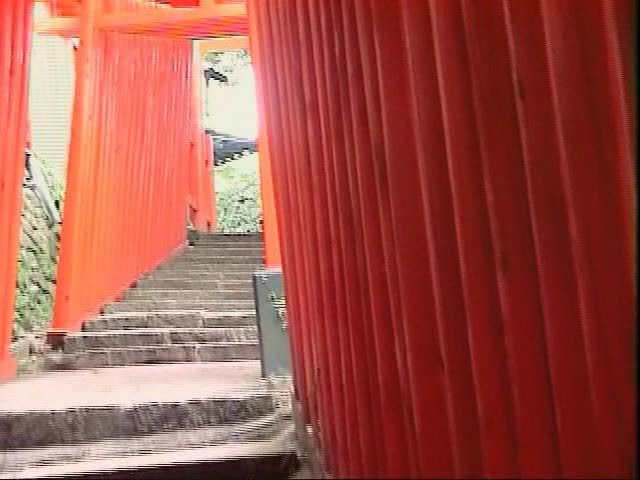


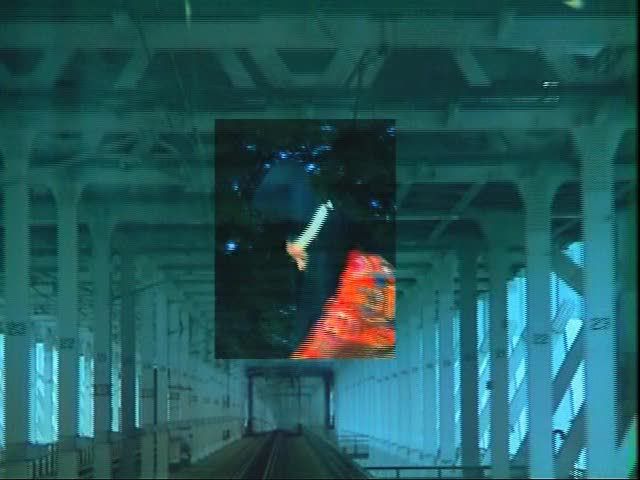

Today, when one goes on a journey, the travel is ritualized through the visual machine. The image, coming alive in time as it frames time, is there where the actual and virtual meet. In the process of ritualizing Japan's "hundred flowers," it is the encounter between self and other, human and machine, viewer and image, fact and fancy that determines the field of relations in which new interactions between past and present are made possible. Shown in their widespread functions and manifestations, including more evident loci such as festival, religious rite and theatrical performance, "rituals" involve not only the regularity in the structure of everyday life, but also the dynamic agents in the ongoing process of creating digital images at the speed of light.
"Striking visual compositions and juxtapositions and a stunning soundtrack. As we watch and listen to this provocative and meditative piece, we, too, become 'attentive to the infraordinary - an intrusion of eternity.'" - I. Leimbacher, The San Francisco Cinematheque
Download this at KaraGarga.
at 8:38 PM
T. Minh-ha Trinh - Surname Viet Given Name Nam (1989)
Download this at KaraGarga.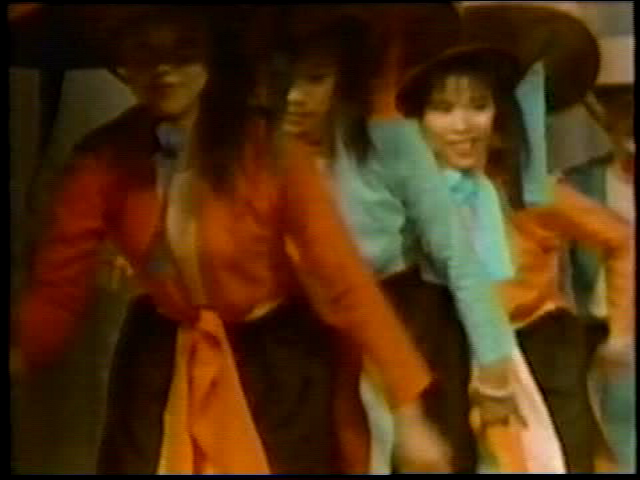
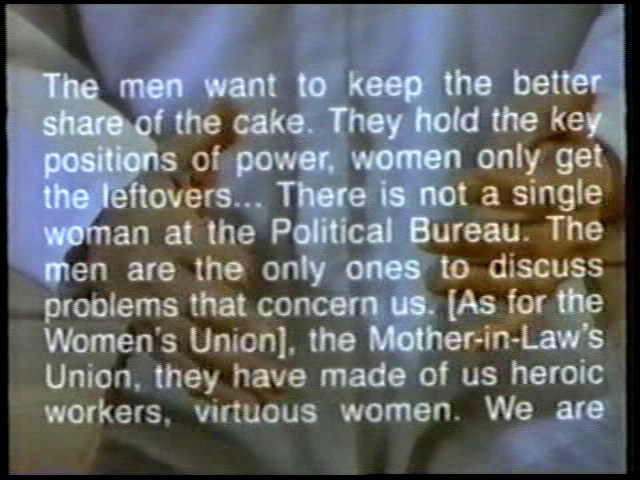
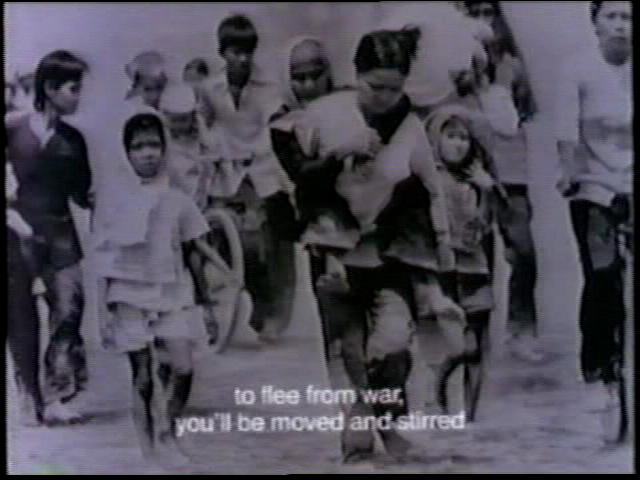

Of marriage and loyalty: “Daughter, she obeys her father/ Wife, she obeys her husband/ Widow, she obeys her son.”
Vietnamese-born Trinh T. Minh-ha’s profoundly personal documentary explores the role of Vietnamese women historically and in contemporary society. Using dance, printed texts, folk poetry and the words and experiences of Vietnamese women in Vietnam—from both North and South—and the United States, Trinh’s film challenges official culture with the voices of women. A theoretically and formally complex work, SURNAME VIET GIVEN NAME NAM explores the difficulty of translation, and themes of dislocation and exile, critiquing both traditional society and life since the war.
Download this at KaraGarga.
at 8:36 PM
Helga Fanderl - Fragile (2008)
Tuesday, June 3, 2008
Download this at KaraGarga.



 Born in Ingolstadt in 1947. Studied German, Romance Languages and Literature in Munich, Paris and Frankfurt/Main (1967-1973). Studied at the Art School, “Städelschule”, in Frankfurt/Main (1987-1992) and at Cooper Union in New York City (1992-1993). Since 1990 her work is represented in film museums, museums of modern and contemporary art, exhibition spaces, galleries, art house cinemas, and other locations she has selected: Deutsches Filmmuseum, Frankfurt/Main.; Arsenal, Berlin; Portikus, Frankfurt/Main.; Museum für Zeitgenössische Kunst, Basel; Österreichisches Filmmuseum, Wien; Anthology Film Archives, New York; Museum für Moderne Kunst, Frankfurt/Main.; Centre genevois de gravure contemporaine, Genf; Musée d’Art Moderne, Strasbourg; Kunsthalle Bielefeld; Schirn Kunsthalle, Frankfurt/Main.; Ausstellungsraum Konstantin Adamopoulos, Frankfurt/Main.; Galerie König and Johanneskirche, Hanau; Galerie Agathe Gaillard, Paris; Xenix, Zürich; Filmpodium, Zürich; Kino im Kunstmuseum, Bern; L’Entrepôt, Paris; Centre Bruxelles-Wallonie, Paris; Babylon Mitte, Berlin; Cineteca di Bologna; Mal Seh’n Kino, Frankfurt/Main.; Stadtkino Basel; Forum des images, Paris; Studio Galande, Paris; Goethe House, New York; The New York Public Library, New York; Theater in der Garage, Erlangen; Theater am Turm (TAT), Frankfurt/Main.; Centre Culturel Suisse, Paris.
Born in Ingolstadt in 1947. Studied German, Romance Languages and Literature in Munich, Paris and Frankfurt/Main (1967-1973). Studied at the Art School, “Städelschule”, in Frankfurt/Main (1987-1992) and at Cooper Union in New York City (1992-1993). Since 1990 her work is represented in film museums, museums of modern and contemporary art, exhibition spaces, galleries, art house cinemas, and other locations she has selected: Deutsches Filmmuseum, Frankfurt/Main.; Arsenal, Berlin; Portikus, Frankfurt/Main.; Museum für Zeitgenössische Kunst, Basel; Österreichisches Filmmuseum, Wien; Anthology Film Archives, New York; Museum für Moderne Kunst, Frankfurt/Main.; Centre genevois de gravure contemporaine, Genf; Musée d’Art Moderne, Strasbourg; Kunsthalle Bielefeld; Schirn Kunsthalle, Frankfurt/Main.; Ausstellungsraum Konstantin Adamopoulos, Frankfurt/Main.; Galerie König and Johanneskirche, Hanau; Galerie Agathe Gaillard, Paris; Xenix, Zürich; Filmpodium, Zürich; Kino im Kunstmuseum, Bern; L’Entrepôt, Paris; Centre Bruxelles-Wallonie, Paris; Babylon Mitte, Berlin; Cineteca di Bologna; Mal Seh’n Kino, Frankfurt/Main.; Stadtkino Basel; Forum des images, Paris; Studio Galande, Paris; Goethe House, New York; The New York Public Library, New York; Theater in der Garage, Erlangen; Theater am Turm (TAT), Frankfurt/Main.; Centre Culturel Suisse, Paris.
Download this at KaraGarga.
at 6:04 PM